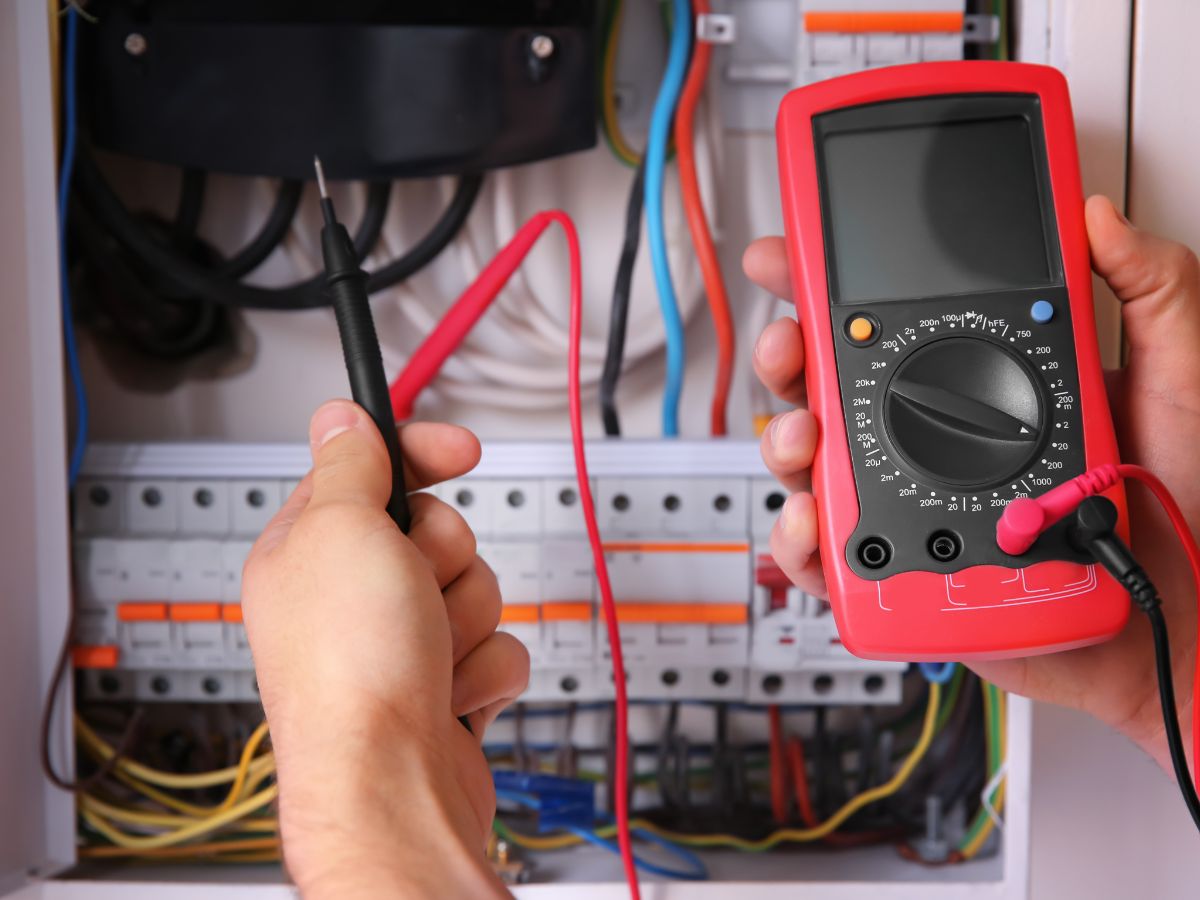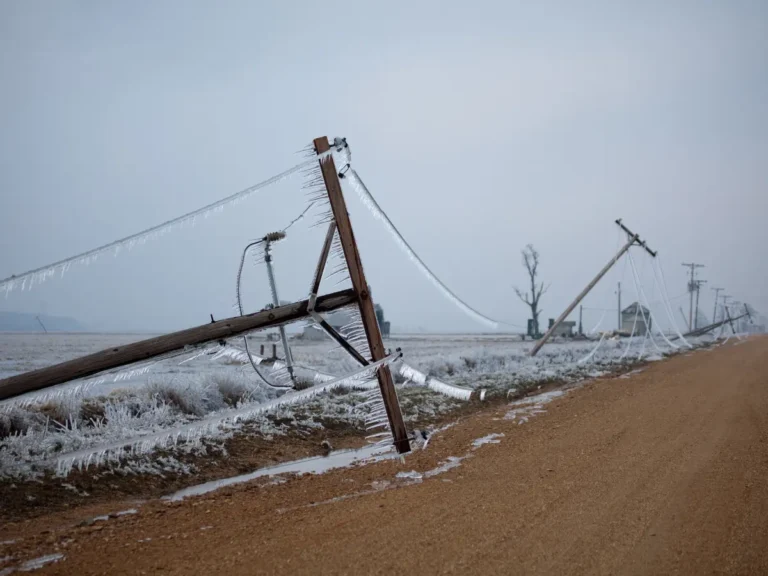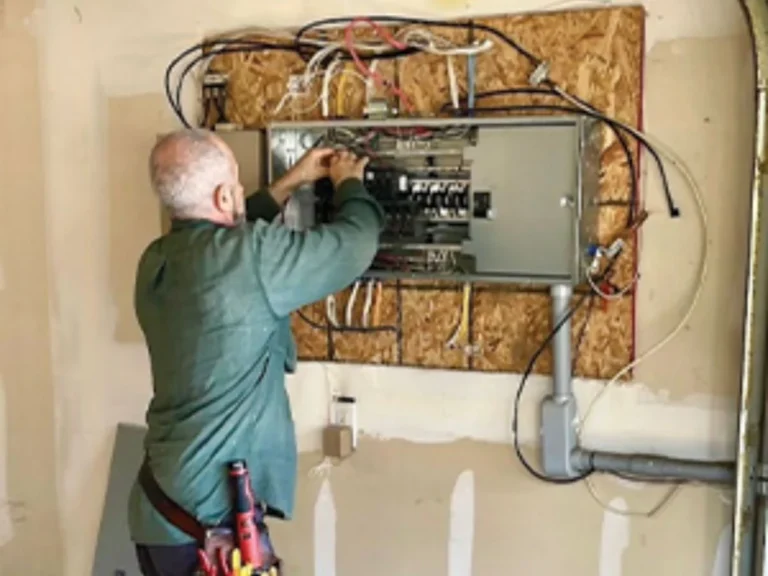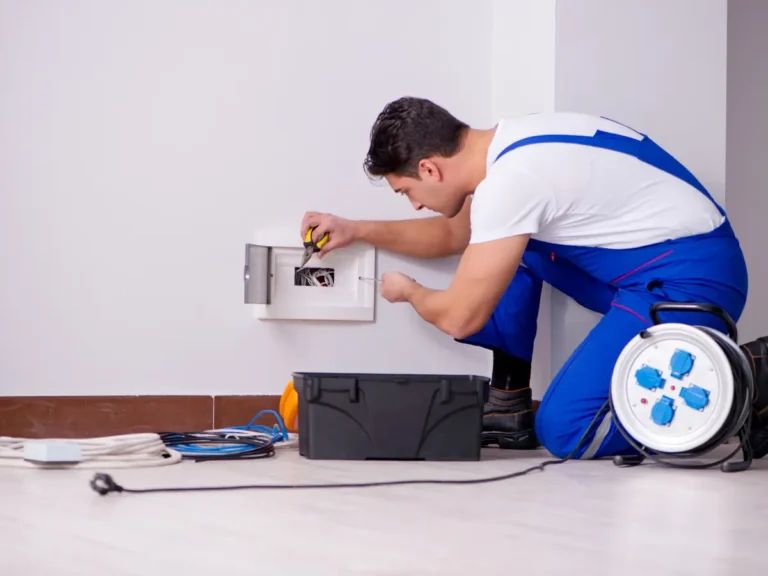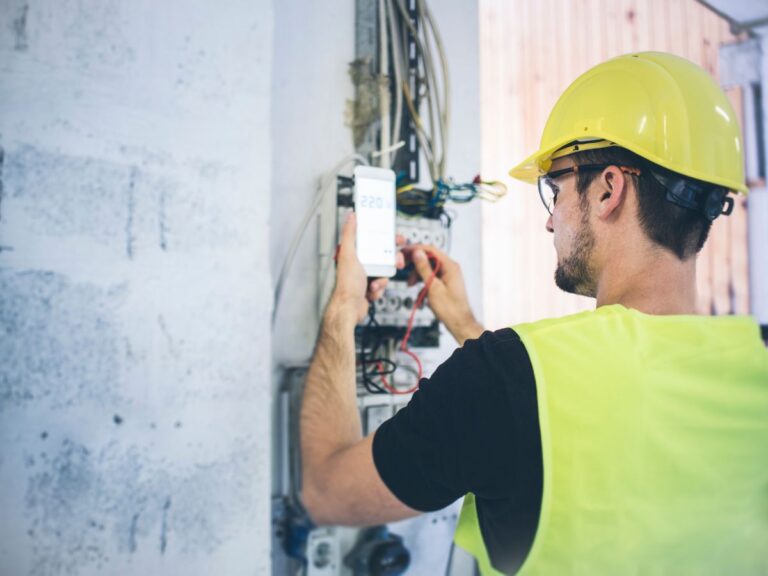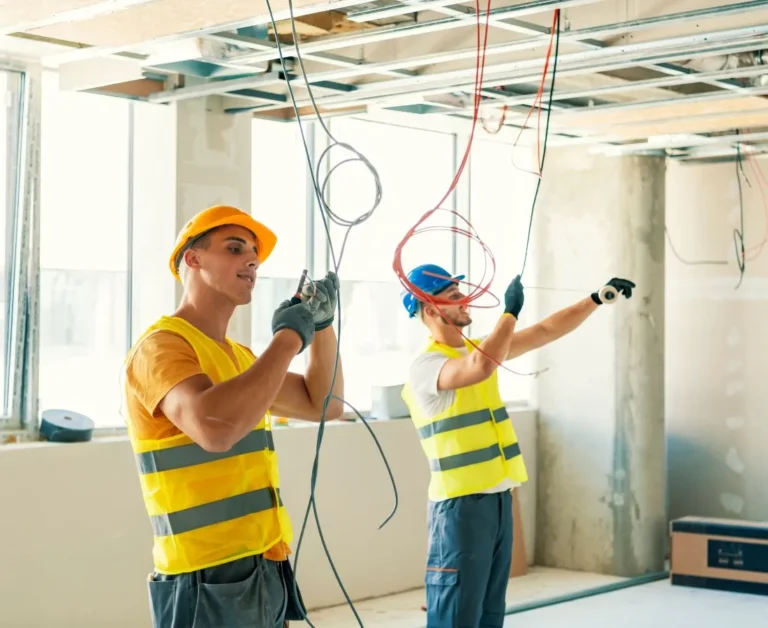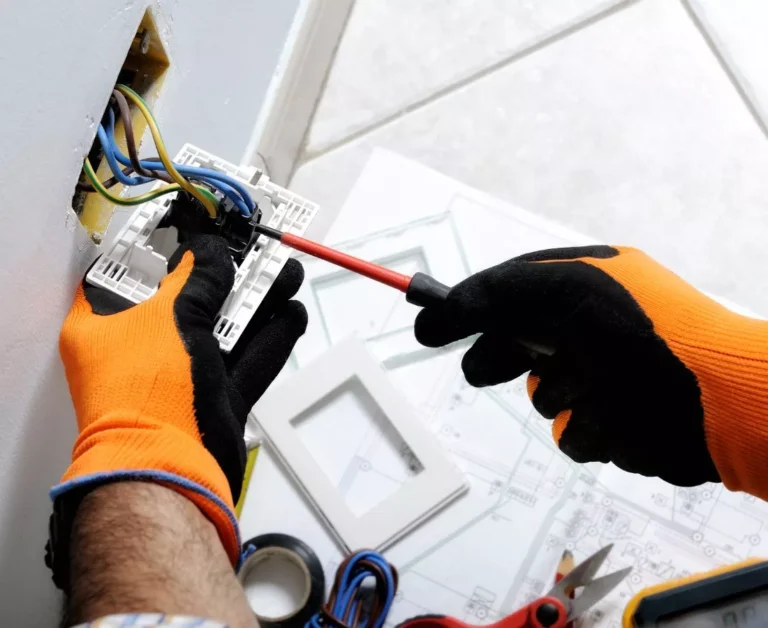Unveiling the Secrets of Basic Electrical Troubleshooting
Have you ever experienced an unexpected circuit trip, a stoppage in the operation of outlets, or a flickering of the lights? Our everyday routines might be disrupted and made stressful by dealing with electrical problems. This is when simple electrical troubleshooting is useful. It enables us to recognize and address typical electrical issues, ensuring the efficient operation of our electrical systems.
In this blog post, we will discuss the importance of fundamental electrical troubleshooting in resolving common electrical problems and reveal its secrets. Learning the fundamentals of electrical troubleshooting can help you avoid wasting time, money, and the inconvenience of waiting for expert assistance, whether you’re a homeowner, a business owner, or just someone who wants to understand electrical systems better.
Basic electrical troubleshooting procedures, electrical troubleshooting, and electrical troubleshooting in Toronto are just a few of the key concepts we’ll cover in this post. You will have learned a lot about how to troubleshoot electrical issues by the time you’ve finished reading this article, giving you the power to manage the operation of your electrical system and create a safer and more effective environment.
So let’s get started if you’re ready to explore the world of simple electrical troubleshooting and solve the mysteries around electrical problems.
Understanding Basic Electrical Troubleshooting
Our houses, workplaces, and a variety of equipment are all powered by electrical systems, which play a crucial role in our daily lives. However, electrical problems might occur, disrupting operations and posing risks. Basic electrical troubleshooting is necessary in this situation. It is the procedure for locating and fixing typical electrical issues, enabling us to make sure that our electrical systems are operating safely and restoring functionality.
In a nutshell, basic electrical troubleshooting requires taking a methodical approach to identifying and resolving electrical problems. It entails comprehending the foundations of electrical circuits, parts, and connections and using that expertise to pinpoint the problem’s primary cause. Troubleshooting enables us to identify the problematic parts or regions of the electrical system and put the required fixes in place by using a step-by-step procedure.
When it comes to electrical troubleshooting, safety measures are crucial. Prioritizing one’s own safety and the safety of others is vital when working with electricity because it can be dangerous. It is crucial to take safety steps including shutting off the electricity to the troubled region, donning the proper protective gear, and creating a safe working environment before beginning any troubleshooting. Additionally, for efficient troubleshooting and to reduce the danger of electrical mishaps, it is essential to have a fundamental grasp of electrical systems, including circuit breakers, wiring, and grounding.
You can confidently dive into basic electrical troubleshooting by using safety precautions and having a firm grasp of electrical systems. This not only gives you the ability to quickly recognize and fix common electrical problems, but it also saves you time and money by preventing needless service calls. Additionally, troubleshooting improves your general understanding of electrical systems, enabling you to maintain a more secure and effective environment for both you and others.
In the parts that follow, we’ll examine the basic electrical troubleshooting method step by step and go more into particular troubleshooting strategies and factors. Always seek the advice of a licensed electrician if you have any doubts or experience complicated electrical issues.
Basic Electrical Troubleshooting Steps
When dealing with electrical problems, using a methodical approach to troubleshooting can aid in problem identification and successful problem solving. Let’s go over the basic electrical troubleshooting procedure step by step:
- First evaluation and observation: Start by evaluating the situation and looking for any obvious indications of electrical issues. Search for any strange sounds or smells, flickering lights, broken switches or outlets, or circuit breakers that trip frequently. Pay close attention to the particular regions or equipment that are having problems. or smells. Pay attention to specific areas or appliances affected by the issue.
- Examining Power Connections and Sources: Make that the power source is functional and generates electricity. Verify that the circuit breakers are all turned “on” and that the main electrical panel is operating as it should. Check to make sure any fuses are not blown (if any are). Check the connections to the troubled area or appliance to make sure they are safe and in good condition.
- Switches, outlets, and circuit breakers inspection: Check the problem area’s switches, outlets, and circuit breakers. Keep an eye out for any obvious irregularities, burned or melted odors, and loose or broken wiring. Replace any blown fuses (if necessary) and carefully reset any circuit breakers that have tripped.
- Using electrical tools or meters for testing: To find the problem and acquire more information, use electrical instruments or meters. With the use of a multimeter, you can test voltage, resistance, and continuity to find areas or components that are broken. Check the voltage and continuity of the wires, switches, and outlets. Caution and respect to safety regulations are required for this phase.
- Identifying the Issue and Exploring Potential Solutions: Determine which component, region, or circuit is the source of the issue based on your observations and test results. Look for potential causes including damaged wiring, broken appliances, or overloaded circuits. To find potential fixes for the specific problem found, consult electrical manuals, online resources, or professional guidance.
Do not forget that electrical troubleshooting can occasionally be complicated and that some problems may call for the assistance of a qualified electrician. It is always advised to seek professional assistance if you get into strange or dangerous conditions or if the problem cannot be fixed using the troubleshooting techniques. Safety must always come first when troubleshooting, and if in doubt, get advice from a licensed electrician.
You may improve your knowledge of electrical systems, find solutions to frequent problems, and maintain a secure and efficient electrical environment by using the basic electrical troubleshooting procedures described here.
Electrical Troubleshooting Toronto
There may be particular considerations and elements to keep in mind depending on the location when it comes to electrical troubleshooting. Here are some suggestions and things to keep in mind if you’re in Toronto (or any other particular place) to assist you deal with electrical issues successfully:
- Familiarize Yourself with Local Regulations: Electrical installations and maintenance are governed by electrical codes and regulations that vary by region. The Ontario Electrical Safety Code, which sets the rules and specifications for electrical work, should be understood in Toronto. Learn about these rules so that you may troubleshoot electrical issues safely and in compliance.
- Obtain Professional Assistance: Although simple electrical troubleshooting can be completed by homeowners, there are times when it is preferable to enlist the help of a certified electrician. It is advised to seek professional advice when dealing with complicated electrical problems or circumstances that call for significant repairs or rewiring. Toronto electricians are knowledgeable about regional electrical codes and can offer precise diagnostics and remedies.
- Make Use of Local Resources: Numerous local resources are available in Toronto that can help with electrical troubleshooting. The regulating organization in charge of electrical safety in Ontario is the Electrical Safety Authority (ESA). Their website offers helpful details, references, and safety recommendations that can help you with your troubleshooting. In addition, the ESA provides a list of registered electrical contractors in Toronto, which can assist you in locating certified experts if necessary.
- Keep an eye out for common electrical problems: Some electrical problems could be more common in certain places. Old-fashioned knob-and-tube wiring, aluminum wire in older residences, and problems with electrical panels as a result of growing electrical demand are some of the frequent electrical concerns in Toronto. You can avoid future issues and find solutions before they arise by being aware of these typical challenges.
- Take into account weather-related factors: Toronto encounters a variety of weather patterns all year long, including hot summers and chilly winters. Extreme weather conditions and temperature swings can make electrical systems much more vulnerable. Pay attention to any electrical problems that appear in conjunction with a change in the weather because temperature changes might have an effect on electrical parts. To prevent problems, make sure electrical connections are properly weatherproofed and insulated.
Always prioritize safety when solving electrical issues, never forget that. It is essential to seek the advice of a qualified electrician in Toronto if you get into a scenario that is beyond the scope of your experience or skills. You can approach electrical troubleshooting in Toronto with confidence and make sure that your home or place of business has a safe and dependable electrical system by being aware of local laws, making use of the resources at your disposal, and taking location-specific considerations into account.
Wrap Up
In this blog post, we examined basic electrical troubleshooting steps and its role in locating and addressing typical electrical problems. Let’s review the key ideas discussed:
- Basic electrical troubleshooting uses a methodical process to locate and fix electrical issues.
- Before beginning any troubleshooting, it is essential to take safety precautions and have a solid grasp of electrical systems.
- Initial analysis, examining power sources and connections, reviewing switches and outlets, testing with electrical equipment, and isolating the issue are all steps in the step-by-step procedure.
- It’s critical to take local laws, local resources, and frequent electrical problems into account for particular places like Toronto.
You can develop confidence in dealing with simple electrical problems and keeping a secure electrical system by putting the steps presented to use. But it’s crucial to be aware of your limitations. Licensed electricians should handle complicated problems or circumstances that call for specialized knowledge.
By taking care of small electrical problems right away, basic electrical troubleshooting abilities can help you save time and money. Additionally, it aids in maintaining a secure atmosphere for your family, your employees, or your company.
Keep in mind that electrical systems can be complicated, and your safety is of utmost importance. It is advisable to seek professional assistance if you are unclear or run into difficult circumstances. Don’t be reluctant to get in touch with knowledgeable electricians who can offer precise diagnoses and practical remedies.
Therefore, educate yourself on fundamental electrical troubleshooting techniques and always put safety first. You’ll be able to take care of typical electrical problems this way, maintain a dependable electrical system, and experience peace of mind knowing that your electrical demands are being met.

